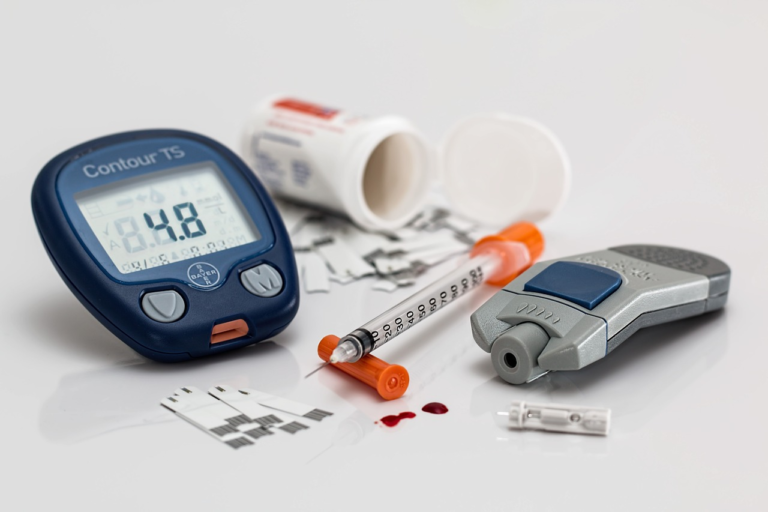Screen Time vs Active Time – Striking A Balance In Childhood Obesity Prevention And Diabetes Management
#ez-toc-container {
background: #f9f9f9;
border: 1px solid #aaa;
border-radius: 4px;
-webkit-box-shadow: 0 1px 1px rgba(0, 0, 0, .05);
box-shadow: 0 1px 1px rgba(0, 0, 0, .05);
display: table;
margin-bottom: 1em;
padding: 10px 20px 10px 10px;
position: relative;
width: auto;
}
.ez-toc-container-direction {
direction: ltr;
}
.ez-toc-list-level-1 a{
font-weight:bold;
}
Table of Contents
1. Introduction to Screen Time and Active Time
In today’s digital age, screen time has become an integral part of modern childhood. From smartphones and tablets to computers and televisions, children are increasingly exposed to screens for both educational and entertainment purposes. Understanding the dynamics of screen time, its impact on children’s health, and the importance of balancing it with active time is crucial for parents and guardians alike.
-
Overview of Screen Time and its Prevalence in Modern Childhood
Screen time refers to the amount of time spent using devices with screens such as televisions, computers, smartphones, and tablets. The prevalence of screen time in modern childhood is significant:
- With the advent of technology, children are encountering screens at younger ages. A report shows that children aged 8 to 18 spend an average of over 7 hours daily on screen-related activities.
- The educational use of tablets and computers has increased in schools, further integrating screens into daily life.
- Social media platforms and video games are especially popular among adolescents, contributing to extended periods of screen use.
The increasing reliance on screens raises concerns about potential impacts on physical health, mental well-being, and social development.
-
Discussion of Active Time and Its Benefits for Health and Wellness
Active time, defined as any bodily movement produced by skeletal muscles requiring energy expenditure, is essential for fostering healthy physical and mental development in children. The benefits of active time include:
- Enhanced physical fitness: Regular physical activity helps in building strong bones, muscles, and joints. It also improves cardiovascular health.
- Mental health benefits: Exercise has been shown to reduce symptoms of anxiety and depression, boosting mood and self-esteem.
- Improved concentration and learning: Active time encourages better brain function, aiding concentration and cognitive performance in children and adolescents.
Encouraging children to engage in physical activities such as playing outdoor games, participating in sports, or simply walking can lay the foundation for a healthier lifestyle.
-
Importance of Balancing Screen Time with Physical Activity
Balancing screen time with physical activity is imperative to combat the rising challenges of childhood obesity and diabetes. Here’s why:
- Childhood Obesity Prevention: An imbalance between screen time and active time can lead to sedentary lifestyles, contributing to obesity. Encouraging regular physical activity can help maintain a healthy weight.
- Diabetes Management: Engaging in physical activities helps regulate insulin sensitivity and blood sugar levels, crucial for managing and preventing type 2 diabetes in children.
- Holistic Development: A balanced approach not only benefits physical health but also supports social skills development and academic achievement.
By understanding the impacts and implementing structured routines that promote moderate screen exposure alongside ample active time, caregivers can significantly influence healthier growth patterns in children.
The interplay between screen time and physical activity is a significant aspect of modern child-rearing. Emphasizing active time while mindfully regulating screen exposure can guide children towards healthier, well-balanced lifestyles, reducing risks associated with sedentary habits.

2. The Impact of Excessive Screen Time on Children’s Health
In today’s rapidly digitalizing world, the omnipresence of screens is undeniable. Children are increasingly accessing screens through various mediums such as tablets, smartphones, televisions, and computers. While these devices offer immense educational and entertainment value, it is crucial to understand their impact on children’s health. One pressing concern is the growing relationship between excessive screen time and childhood obesity.
-
Analysis of the relationship between screen time and childhood obesity
Childhood obesity is a multifaceted issue with a variety of contributing factors, and one of the most significant is the amount of time children spend in front of screens. Research suggests that increased screen time is associated with greater risks of obesity in children. This correlation is often attributed to the sedentary nature of screen-related activities and their influence on lifestyle choices.
When children are engrossed in screen activities, such as playing video games or watching television, they tend to remain inactive for extended periods. This lack of physical activity can lead to weight gain as calories consumed are not burned off effectively. Additionally, screen time often coincides with snacking on high-calorie, low-nutrient foods, further exacerbating the risk of obesity.
-
Potential risks of excessive screen use
Excessive screen use poses several potential risks, including the promotion of a sedentary lifestyle and poor dietary habits. Both factors contribute to the increasing incidence of childhood obesity and other related health issues.
-
Sedentary Lifestyle
The nature of screen-based activities encourages prolonged periods of sitting or lying down, significantly reducing a child’s overall physical activity. This sedentary behavior is a major risk factor for obesity, as it limits the time and opportunities for engaging in physical exercises that are crucial for maintaining a healthy weight.
-
Poor Dietary Habits
Screens often influence children’s eating behaviors. Screen time is typically associated with mindless eating, where children consume snacks without paying attention to portion size or nutritional value. Additionally, exposure to advertisements for unhealthy foods can contribute to poor dietary choices, including the consumption of sugary drinks, fast food, and snacks laden with unhealthy fats and sugars.
-
Sedentary Lifestyle
-
Examination of the link between prolonged screen exposure and the development of type 2 diabetes in children
Prolonged screen exposure is not only linked to weight gain but is also a potential contributor to the development of type 2 diabetes in children. The sedentary lifestyle associated with excessive screen time can lead to obesity, disrupting normal glucose metabolism and increasing the risk of insulin resistance.
Moreover, high screen exposure is often correlated with other risk factors for type 2 diabetes, such as poor dietary choices and reduced physical activity. These behaviors collectively contribute to the increase in insulin resistance and the deterioration of blood sugar control, eventually leading to type 2 diabetes in susceptible individuals.
In conclusion, while technology and screens are an integral part of modern life, it is essential to be mindful of their impact on children’s health. Limiting screen time, encouraging physical activity, and promoting healthy dietary choices are crucial strategies to combat the negative consequences associated with excessive screen use. Addressing these issues is vital for reducing the incidence of childhood obesity and associated conditions such as type 2 diabetes, ensuring children have a healthy start to life.

3. Benefits of Active Time for Childhood Obesity Prevention and Diabetes Management
Understanding the benefits of active time is crucial in addressing childhood obesity and diabetes management. The role of physical activity extends beyond mere play, offering transformative effects on body composition and metabolic health in children.
The Role of Physical Activity in Reducing Body Fat and Promoting Healthy Weight
A common approach to preventing childhood obesity is through promoting physical activity. Here’s why exercise is important:
- Caloric Expenditure: Engaging in physical activities increases caloric expenditure, which prevents excess calorie storage as body fat.
- Metabolic Boost: Regular activity enhances metabolic rate, facilitating more efficient energy utilization even at rest.
- Muscle Development: Physical activity helps build muscle mass, which is vital for a higher resting metabolic rate and improved body composition.
- Hormonal Balance: Exercise can regulate hormones like insulin, leptin, and adiponectin, involved in weight management.
Incorporating a variety of activities can make exercise enjoyable and contribute to sustainable healthy weight maintenance. Some effective activities include:
- Team Sports: Soccer, basketball, and baseball encourage dynamic movements that burn calories and build endurance.
- Swimming: A low-impact, full-body workout that boosts cardiovascular health and burns significant calories.
- Dance: Encourages expression and coordination while offering a cardio workout.
- Cycling: Improves leg strength and cardiovascular fitness, making it a fun outdoor activity.
How Regular Exercise Can Improve Insulin Sensitivity and Glucose Metabolism
Exercise plays a crucial role in enhancing insulin sensitivity and optimizing glucose metabolism, key factors in diabetes management:
- Increased Insulin Sensitivity: Regular physical activity improves the efficiency of glucose uptake by muscles, reducing the demand for insulin.
- Glycogen Utilization: Active muscles use stored glycogen, promoting better glucose homeostasis and reduced blood sugar levels.
- Reduction in Visceral Fat: Exercise lowers visceral fat, associated with insulin resistance and glucose tolerance.
- Improved Lipid Profile: Physical activity can positively alter blood lipids, reducing triglycerides and increasing HDL (good) cholesterol.
For optimal glycemic control, consistency in physical activity is key. Encouraging children to engage in sports and other physical activities regularly is beneficial for their glucose regulation.
Encouragement of Active Play and Sports as a Means to Combat Obesity and Diabetes in Children
To sustainably combat childhood obesity and diabetes, encouraging active play and sports is essential. Here’s how it can be effectively done:
- Structured Play: Organize structured playtime with activities like obstacle courses or group games that require movement and teamwork.
- Inclusive Sports Programs: Schools and community centers should offer diverse sports programs catering to varying interests, ensuring inclusivity.
- Parental Involvement: Parents can model active behavior by participating in activities with their children, making exercise a family affair.
- Educational Initiatives: Educating children about the benefits of an active lifestyle through school programs raises awareness and encourages participation.
Creating an environment that values physical activity is vital. This involves integrating movement into daily routines, providing access to sports facilities, and incentivizing active participation through rewards and positive reinforcement.
In conclusion, prioritizing active time can significantly impact childhood obesity prevention and diabetes management. By focusing on reducing body fat, improving insulin sensitivity, and encouraging a culture of physical activity, we pave the way for healthier future generations.
4. Strategies for Balancing Screen Time and Active Time in Children
As technology continues to advance, children are increasingly exposed to screens at a younger age. Balancing screen time with active play is essential for their overall health and development. In this segment, we outline strategies to help parents and caregivers establish healthy screen limits, integrate technology with physical activities, and promote active lifestyles for kids.
Establishing Healthy Screen Time Limits
Setting boundaries on screen time is crucial to ensure children engage in physical activities, social interactions, and other crucial developmental experiences. Here’s a guide to screen time limits for different age groups:
- Infants (0-18 months): Screen time should be avoided, except for video chatting which can be beneficial for social interaction with distant family members.
- Toddlers (18-24 months): If introducing screen time, choose high-quality programming and co-view with your child to help them understand what they are seeing.
- Preschoolers (2-5 years): Limit screen use to one hour per day of high-quality content, co-viewing when possible to facilitate understanding and learning.
- School-aged children (6 years and older): Establish consistent limits on time spent using media and ensure it does not interfere with sleep, physical activity, and other healthy behaviors.
Integrative Approaches to Combine Technology with Physical Activities
Technology does not have to mean sedentary behavior. There are numerous ways to use screens to encourage physical activity:
- Fitness Apps: Apps that promote physical activity, such as yoga for kids or dance tutorials, can be a fun way for children to stay active.
- Active Video Games: Games that require physical movement, like dancing or sports simulation games, can effectively combine screen time with exercise.
- Educational Content with Movement: Some online programs incorporate movement breaks into learning content, prompting children to get up and move regularly.
- Virtual Reality (VR) Experiences: Engage children in immersive experiences where they can physically interact with the environment, encouraging movement alongside digital exploration.
Tips for Parents and Caregivers
Here are some practical tips to help maintain a balance between screen time and active time:
- Create a family media plan: Develop clear rules about technology use that fit the needs and routines of your family. Include designated screen-free times and zones to encourage other activities.
- Lead by example: Demonstrate healthy screen habits yourself. Engage in physical activities, and limit your own screen use to set a positive example.
- Introduce a variety of activities: Offer children a menu of activities to choose from, such as sports, crafts, or outdoor games, to reduce reliance on screens for entertainment.
- Ensure tech use is age-appropriate and beneficial: Screen content should be suitable for your child’s age and focused on learning or creativity, rather than passive consumption.
- Monitor screen use: Keep an eye on the quality and quantity of screen time. Utilize parental control tools to help manage what your kids watch and when.
- Encourage breaks: Institute regular screen breaks, prompting children to engage in a physical activity or relaxation exercise.
- Engage in co-viewing and co-playing: Join your children in their screen activities when appropriate, to better understand their media interactions and create bonding opportunities.
- Promote outdoor play: Encourage children to play outside daily, offering activities that are fun and engaging to balance screen time indoor.
By integrating these strategies, parents and caregivers can facilitate a healthy balance between screen-based and active behaviors, promoting a lifestyle that supports physical, emotional, and cognitive development for children.






